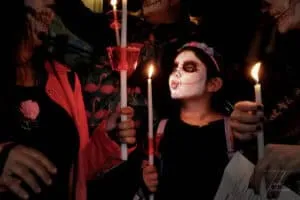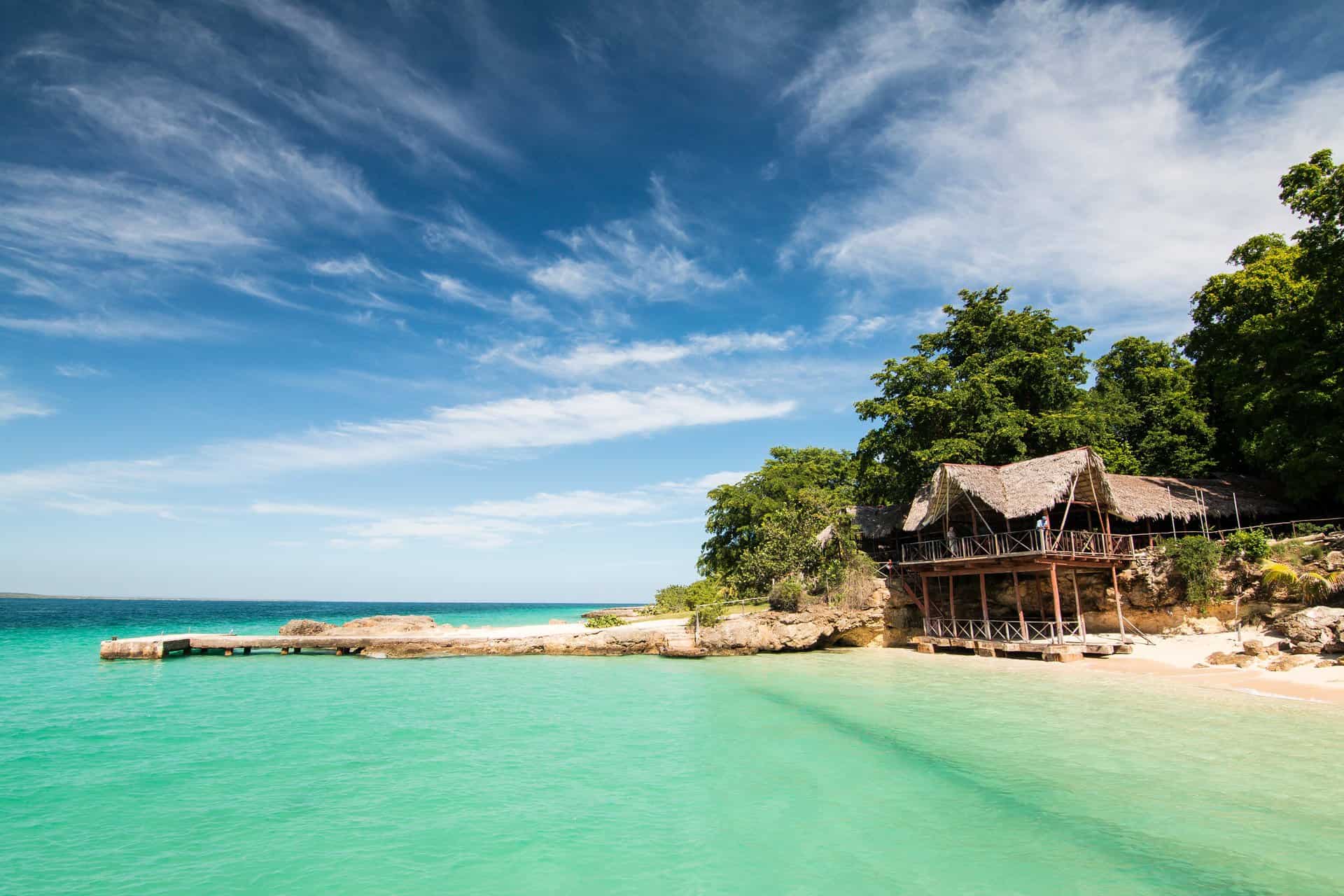


For a holiday centered around death, Día de los Muertos is anything but lifeless.
During this multi-day celebration of the deceased—widely considered a staple of Mexican culture—people honor the afterlife in technicolor. Freshly cut orange and yellow marigolds are tucked between hand-painted sugar skulls and used to decorate ornate altars, where candles, dripping with wax, shine warm light on portraits of those who have passed. Mariachi bands serenade gravestones, while public processions of people dressed in flowery, skeletal ensembles fill the streets.
The exact history of Día de los Muertos is tough to track, but many consider it to be a blend of pre-Colombian and Catholic practices for remembering the deceased that is celebrated around All Saints Day and All Souls Day, or November 1st and 2nd of each year.
Though the elaborate macabre of Dia de los Muertos is largely associated with Mexico, the holiday is not uniquely Mexican. Find yourself travelling almost anywhere in Latin America in the early days of November, and you may stumble upon a Day of the Dead festivity with a taste and texture of its own.
Here’s a glance at how Día de los Muertos is celebrated throughout the region.

Mexico
In addition to attending mass and carnivalesque parades, in Mexico it is common for families to install both public and private ofrendas, or altars, as a way of inviting the spirits of lost loved ones back to the world of the living. A classic ofrenda will include a photo of the deceased surrounded by symbols of the four elements: 1) water, represented by a glass of water, 2) wind, embodied by papel picado (cut paper decorations), 3) earth, represented by a traditional food such as pan de muerto (a sweet bread “of the dead”), and 4) fire, signified by a candle’s flame.

Guatemala
Much like their geographical neighbor, Day of the Dead festivities in Guatemala commence on November 1st. In addition to sprucing up gravesites and honoring their ancestors with flowers and incense, residents use bamboo and colored paper to assemble elaborate kites, known as barriletes gigantes, of various shapes and sizes, which fly high in the sky throughout the month. The kites represent a direct line to heaven and are flown to help deceased loved ones find their way back to Earth. It is also common to make fiambre, a traditional Guatemalan salad comprised of sausages, cold cuts, pickled veggies, cheeses and olives. Recipes vary amongst households.

Bolivia
Every year on November 9th, El Día de las Ñatitas, or Day of the Skulls, is celebrated throughout the Andean regions of Bolivia. Pre-Colombian historians say that indigenous Andeans would spend one day a year with the bones of their ancestors on the third year after their death as a way of showing gratitude for the protection they bestow upon them from the afterlife. Today, these same communities continue the ritual with only the skulls of their deceased loved ones. Families crown the skull with flowers, and pamper it with cigarettes, coca leaves, and alcohol. On some occasions, living family members travel with the skull to a cemetery in La Paz for a special blessing.

Ecuador
Similarly, in Ecuador, Día de los Muertos festivities are particularly important to native communities, who honor the dead by bringing traditional food offerings to the graves of their loved ones. Ceremonial fare includes colada morada, a thick and fruity beverage made from Andean blackberry, purple maize, flour, and spices, and guaguas de pan (also known as t’anta wawa in Aymara and Quechua languages), which are sweet rolls filled with cheese or guava molded to resemble a swaddled infant. Coloda morada y guaguas de pan are generally only consumed together around this time of year.


Varying with place and time, Day of the Dead celebrations throughout Latin America reflect the diversity of the region as a whole. Contact our travel designers today for more insight on how best to experience these festivities wherever your itinerary takes you.
Related Stories
@plansouthamerica




